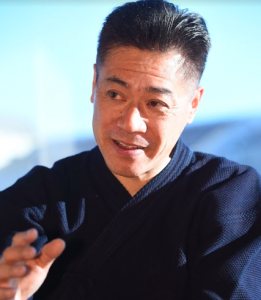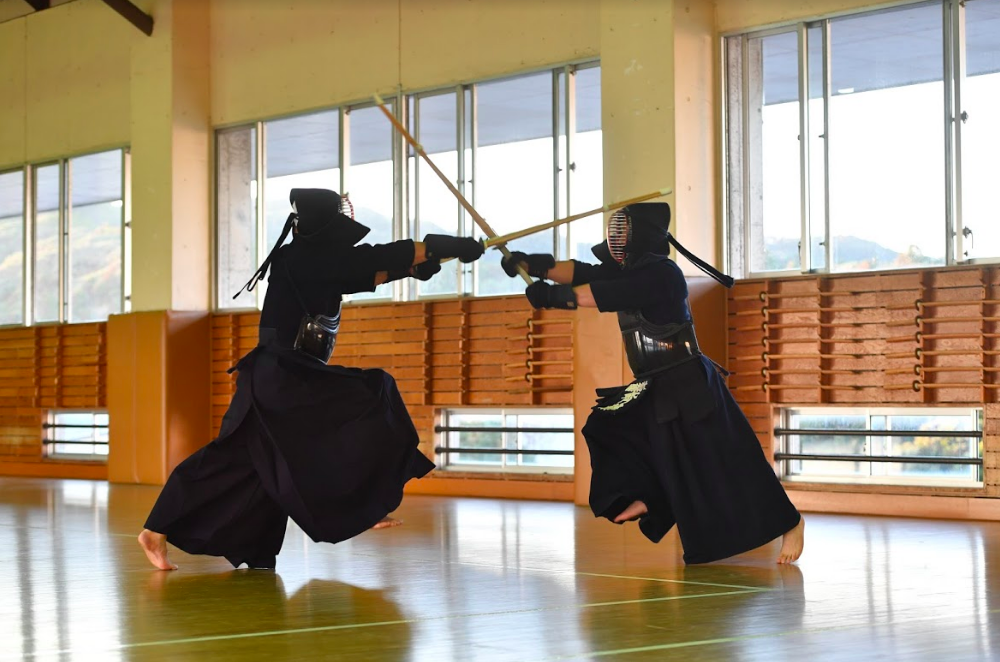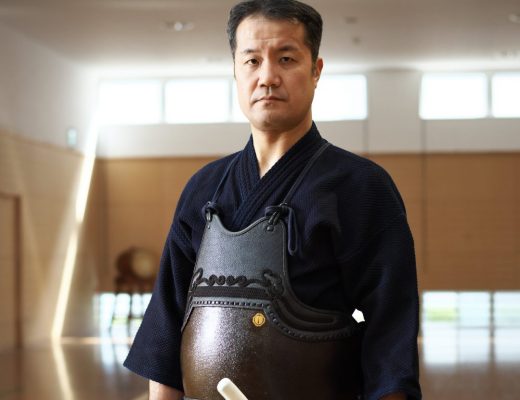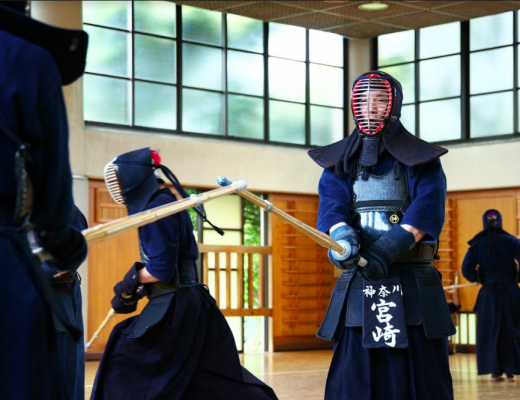The unification of direction of the Shinai and body
To hit a powerful Ippon while paying attention
to the position of the left hand
Iwakiri Sensei is currently the men’ s and women’ s coach of the international budo universities’
kendo club. He emphasizes the importance of confirming the position of the left hand in order to
strike a powerful Ippon. He introduces a part of the Uchikomi-keiko he teaches at the
international budo university.
Profile

Iwakiri Kimiharu, Kyōshi Eighth Dan
Iwakiri Kimiharu, Born Showa 41st in Miyazaki prefecture, 51 years old. Moved form Kōchi … ? highschool to the international budo university, and became a teacher at international budo university after graduating. Participated in the All Japan east-west tournament, Kokutai, national teachers tournament, and the inter-prefectural main … ? tournament among other tournaments. Currently professor and coach of the international universities’ kendo club.
Introduction
I became the coach for my old schools’ men’s’ and women’s team last year. The late Komori …? Sensei who was the main professor at our school endorsed and taught us kendo by which you pressure your opponent with the seme-foot, thus the right foot.
There is a chain of ordering in Kendo by which you pressure, break your opponents posture, and strike your opponent and from there a valid strike is secured. First there is a mutual Kamae, so there are no openings. To connect this to a valid strike, one must break the equilibrium of the kamae, put themselves in a favourable position, and detect an opportunity to strike.
Uchikomi-keiko is a practice based on agreement, but if you perform it without being conscious of the Seme before the strikes, i think it becomes a simple physical exercise.
When students do basic practice, sometimes i put my Men on and i let them do Uchikomi on me. I aim to use louder Kiai than them, establish mutual spirit, and let them perform techniques at the right timings.
Especially when doing Men practice, i will not let them hit me if they make unnecessary preparation with their feet in the process of shortening the striking distance or try to use rhythm while taking swings. And if they try to strike when the Kensaki is out of the centre, i perform Debana techniques. By doing such intense practice, i want them to foster the same feeling while doing practice amongst each other.
Furthermore, the basis of Kote is to hit whilst confronting your opponent, but there are students who perform it with the direction of their body and shinai in different directions to avoid counter attacks. You may be able to defend after striking, but this way of striking does not only make it difficult to get a valid point, it also prevents any follow-up strikes. I aim to foster Kendo fit for future instructors in this Kendo club. That means, from the distance where swords cross, to learn with the body how to take the centre, pressure, and break the posture of your opponent. A representative technique is to pressure Tsuki and hit Men. When pressuring Tsuki, the Kensaki will open and the opportunity for hitting men appears. When pressuring Tsuki, if the hands move up, there is opportunity for Kote, if the hands move down or the Kensaki opens, there is opportunity for Tsuki. It is important to be able to strike with the same trajectory. As with any technique, if the left hand is not subdued by the body it is not possible to perform a technique which meets the requirements of a valid strike. I carry out Uchikomi-keiko whilst confirming the validity of the strikes. I would like to introduce this method.
Confirming striking posture. Whether the left hand is in the correct position when striking.
In kendo it is important to have patience in the ultimate moment of offense and defense. If you can exercise restraint in the moment where you strike or get struck, it leads to a charged state (Tame) and leads to Seme. As they say [Think of it as a loss when your left hand moves] i think patience lies in subduing the left hand. Regarding the position of the left hand when taking Kamae, i instruct subduing the left grip by positioning the first joints of the thumb and the middle finger on the extended line of the belly button, but since individual body type differs it is important to adopt a position suited for yourself.





No Comments